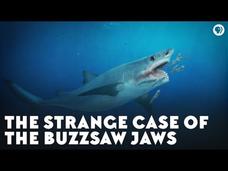Note Taking Teacher Resources
Find Note Taking lesson plans and worksheets
Showing 3,829 resources
Crash Course
Network Solids and Carbon
Allotropes of carbon are a girl's best friend. Here's a video that covers the various networks of solids and carbon, including the process for changing graphite network structures to diamond and then back to graphite. The video...
Crash Course
Nuclear Chemistry
Radioactivity and nuclear chemistry, transmutation of elements and isotopes, calculating half lives and radioactive decay. Introduce these concept and more with a video on carbon dating. The show concludes with an explanation of...
Crash Course
Alkenes and Alkynes
What is the difference in alkanes, alkenes, and alkynes? How can you remember which is which? Viewers learn about naming rules, cis-trans isomerism, hydrogenation, halogenation, polymerization, and triglycerides from a short video...
Crash Course
Polymers
Discover why polymers were created and how their creation saved the elephants with a short video about commercial polymers, ethene and ethylene, addition reactions, ethene-based polymers, addition polymerization and condensation...
Bozeman Science
Plant and Animal Defense
Explain the defense systems of both plants and animals against pathogens with a biology video. It covers the disruption of the immune system through hypersensitive responses, normal responses, nonspecific immune responses, as well as the...
Bozeman Science
Law of Superposition
Scholars learn how rock layers, shift, and move over time. The instructor shows viewers how to solve geologic problems to determine the order of rock layers from oldest to youngest through a drawing video and then actual...
SciShow
Great Minds: James Clerk Maxwell, Electromagnetic Hero
What do Saturn's rings, electromagnetism, and the first color photograph all have in common? James Clerk Maxwell discovered them all! Learn about one of the founders of modern physics with a video biography of his academic...
SciShow
Great Minds: Gregor Mendel
How would you feel if you made a huge scientific discovery, published it everywhere, and shared it with every scientist, only to have it ignored for 35 years because no one understood your genius? Unfortunately, Gregor Mendel died before...
SciShow
Great Minds: Marie Curie
Marie Curie was a genius and a hard-working, selfless, groundbreaking scientist. A video discusses her work, her personal life, and how impressive both were for the time and place she was born.
Bozeman Science
Ecosystems
Living and non-living things are both a part of an ecosystem. A video begins with ecosystem interactions using biotic and abiotic factors. It also covers food webs, limiting factors, and logistic growth. As a real-world connection, it...
3Blue1Brown
Linear Combinations, Span, and Basis Vectors | Essence of Linear Algebra, Chapter 2
What does it mean for two vectors to be linearly independent? The resource presents the basics of basis vectors and linear combinations. The third video in the 15-part series provides a definition of linear independence in terms of the...
TED-Ed
How Ingenious Animals Have Engineered Air Conditioning
Humans aren't the only species to build structures with air conditioning—we weren't even the first! The video explains how a variety of species that live under and above ground design their structures to allow for air circulation. It...
Crash Course
The Sun and The Earth: Crash Course Big History #3
Amaze your class with the fact that more than 1,000 confirmed planets exist. The video explains the formation and development of planets, especially the earth. It covers the solar nebula, birth of the sun, and the development of the...
Crash Course
Why the Evolutionary Epic Matters: Crash Course Big History #203
Imagine a world where the only animals roaming the earth are domesticated. One day, we might not have to imagine the scenario of no wild animals—and that day approaches faster than predicted. A video explains the evolution from...
Crash Course
Migrations and Intensification: Crash Course Big History #7
What happens when the earth reaches its carrying capacity of humans? As human populations grow, societies change from hunters and gatherers to agriculture to the industrial age and beyond. A video takes a global perspective of migration...
Crash Course
Why Human Evolution Matters: Crash Course Big History #204
Is the progression of human complexity due to eating meat? The 14th video in a 16-part series attempts to answer this and other thought-provoking questions. It relates the process of human evolution and innovation to our ability to learn...
PBS
The Strange Case of the Buzzsaw Jaws
Shark teeth in Idaho, China, and Russia confused scientists for hundreds of years. A spiral of sharp teeth presented the first clue, but where would they even go on a shark? Learn more about the strange case in a video that is part of a...
Be Smart
Why Don’t Woodpeckers Get Concussions?
Woodpeckers withstand more than 4,000 Gs without getting a concussion, yet humans only withstand up to 300 without getting one. An eye-opening video explains the difference in anatomy between humans and woodpecker brains as part of a...
Be Smart
Where Did Humans Come From?
Part of a biology playlist, the video discusses human ancestry and represents the first in a smaller four-part series exploring humans. It describes the fossils found, where the fit on the family tree, and why there are so many missing...
Veritasium
What Exactly is the Present?
How do our minds define the present? Is it a second, a split second, or a moment? Our minds play tricks on us when it comes to aligning audio and visual cues. Learn more about why this happens, how our brains correct the error, and how...
Veritasium
Ice Spikes Explained
Sometimes ice freezes with spikes growing out of the top. A brief video provides a scientific explanation for this. Then, it discusses the two different possible futures if ice didn't behave this way.
Veritasium
The Speed of Life
Time appears to go faster the older we get, but why? A timeless video explores this concept psychologically and scientifically. Through an experiment and neuroscience, viewers better understand the paradox of aging.
Veritasium
How Were the Pyramids Built?
Were the pyramids really built using slave labor? New research offers another possibility. In Egypt, many mysteries surround these monuments, and a constructive video (part of a larger series) attempts to answer some. It discusses where...
Veritasium
World's Roundest Object!
The definition of a kilogram is debatable. An informative video (as part of a larger playlist) shares the problem with the current definition of a kilogram. It explains why the concept became a challenge to explain as well as multiple...
Other popular searches
- Cornell Note Taking
- Cornell Note Taking Method
- Cornell Note Taking
- Cornell Note Taking Skills
- Teaching Cornell Note Taking
- Cornell Note Taking Lessons
- Cornell Note Taking System
- Cornell Note Taking System

























